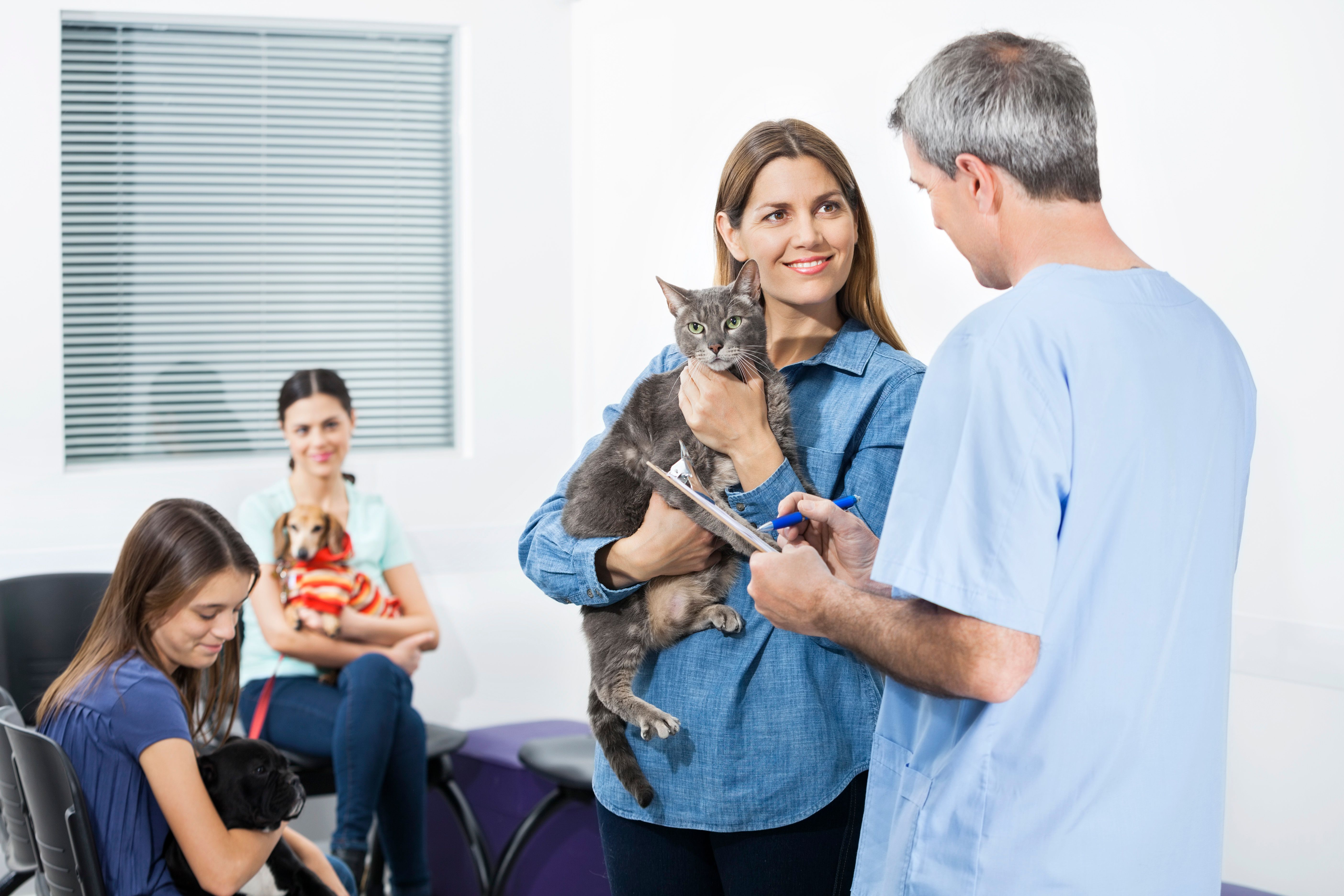What pet owners really want
Recent survey findings revealed which practice trends may be affecting client satisfaction
Tyler Olson / stock.adobe.com

Staffing and other challenges faced by veterinary practices are fueling discussion about how we can improve access to care for veterinary patients. These conversations are critical to animal health and welfare, and the American Veterinary Medical Association (AVMA) welcomes the rigorous conversation and engagement they are drawing from stakeholders across our profession.
One of the important roles that the AVMA is uniquely positioned for is providing timely, accurate, and data- driven information and analysis to inform answers to such questions. To this end, the association undertook a survey1 in September 2023 to understand current attitudes, wants, and needs of pet owners.
The AVMA Pet Owner Attitude Survey was fielded to better understand animal owners’ attitudes and experiences following the COVID-19 pandemic and their thoughts on some of the trends in veterinary care that emerged from the pandemic. Administered online, the survey was completed by 1000 pet owners across the United States. Quotas were used to ensure participants were representative of US adult pet owners.
The results are eye-opening. They indicate that some of the dramatic and far-reaching proposals pitched as solutions to access issues—such as a virtual veterinarian-client-patient relationship (VCPR) or the creation of a new midlevel position between the credentialed veterinary technician and the veterinarian—would, in fact, be met with resistance from pet owners.
Owners prefer in-person relationships
- 88% of pet owners agree that having the veterinarian physically examine their pet and talk to them in person is what leads to the best care. Only 4% disagree, while 8% are indifferent.
- 88% of pet owners would feel more confident in their veterinarian’s treatment plan for their pet if the veterinarian examined the pet and met with them in person before using telemedicine.
These survey results belie the claims of groups and individuals pushing to allow the establishment of a VCPR virtually, without any in-person examination or visit to the premises. Although proponents claim this would increase access to care by allowing telemedicine appointments for animal owners who do not otherwise visit a veterinarian, these data suggest differently.
It’s clear that pet owners prefer and instinctively recognize the importance of establishing an in-person relationship with their veterinarian, prior to seeking virtual care. For clients to embrace and trust telemedicine, we need to acknowledge and honor these preferences.
Once an in-person VCPR has been established, telemedicine can be an important tool to improve the effectiveness, continuity, and efficiency of veterinary care, and for growing relationships with clients.
Owners prefer veterinarian-led care and value pet health and safety
- 76% of pet owners prefer that a veterinarian—not someone else, like a proposed midlevel practitioner— oversee their pet’s care. Only 7% disagree, and the other 14% have no opinion.
- 76% of pet owners put their pet's health and safety above all else as a top priority for veterinary care.
A proposed midlevel position is being suggested by some as a remedy to the staffing struggles and related barriers to veterinary care that were exacerbated by the COVID-19 pandemic. However, the survey responses fail to support this notion.
Instead, the findings suggest that most pet owners intuitively know what many of us recognize as true—that allowing someone other than a veterinarian to diagnose, prognose, make treatment recommendations, prescribe, or perform surgery would jeopardize patient health and safety. Indeed, respondents voiced a strong preference for veterinarian-led care, and they opposed delegating responsibility for care decisions to nonveterinarians.
Simply put, a new midlevel position would not improve access to care because most owners do not want it.
Wait times are improving
- 76% of pet owners waited less than a week for their last nonemergency appointment, and 60% waited 3 days or less.
- 78% of pet owners waited less than 2 hours to be seen the last time their pet had an immediate medical emergency.
These numbers, along with other data from Vetsource and VetWatch showing declines in clinic visits,2 patients,3 and clients,3 are evidence that the demand for veterinary services is normalizing to prepandemic levels. They also refute outdated claims that pet owners seeking to visit the veterinarian in person are unable to do so on a timely basis— another justification cited by supporters of a virtual VCPR and the creation of a new midlevel position.
The bottom line
The most important consideration for any proposal to address our profession’s workforce challenges is that it must prioritize patients’ needs. A virtual VCPR and a midlevel position are the wrong answers—both because they would put patient health and welfare at risk and because they are not what clients want.
If your state is among those considering a virtual VCPR or introducing a new midlevel position, you can help by sharing these survey findings with your state policymakers and working with your state and local veterinary medical associations to build understanding of the need for the in-person VCPR as well as the dangers of a new midlevel position.
Finding the right solutions
The most effective approaches to the staffing challenges we face in our veterinary practices are those that focus on retaining staff—especially veterinary technicians, veterinary technologists, and veterinary technician specialists— leveraging them to the top of their degrees and utilizing technology to drive efficiency.
Telemedicine is an important tool in our toolkit. It is not a substitute for in-person veterinary care, but proper use of telemedicine can most certainly enhance and expand care delivery. The AVMA provides resources that empower veterinarians to explore and integrate telemedicine and other telehealth services that animal owners are seeking. Find them online at avma.org/ telehealth.
References
1. 2023 Pet Owner Attitude Survey: key findings. American Veterinary Medical Association. November 2023. Accessed November 15, 2023.
https://www.avma.org/sites/default/files/2023-11/AVMA-2023-Pet-Owner-Attitude-Survey-For%20Release-20231101.pdf
2. Veterinary industry tracker. Vetsource. Accessed December 7, 2023.
https://vetsource.com/resources/veterinary-industry-tracker
3. Veterinary market trends. VetWatch. Accessed December 7, 2023.
https://www.vetwatch.com/veterinary-market-trends/#site-content
